
Sukkot, commonly called the Feast of Tabernacles or in some translations the Festival of Shelters, and known also as the Feast of Ingathering, is a biblical Jewish holiday celebrated on the 15th day of the seventh month, Tishrei. During the existence of the Jerusalem Temple, it was one of the Three Pilgrimage Festivals on which the Israelites were commanded to perform a pilgrimage to the Temple.
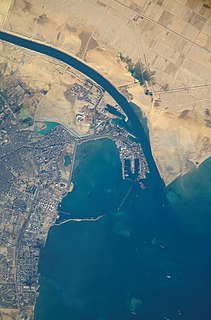
The Suez Canal is an artificial sea-level waterway in Egypt, connecting the Mediterranean Sea to the Red Sea through the Isthmus of Suez. It is often considered to define the border between Africa and Asia. Constructed by the Suez Canal Company between 1859 and 1869, it officially opened on 17 November that year. The canal, which is part of the Maritime Silk Road, offers watercraft a more direct route between the North Atlantic and northern Indian oceans via the Mediterranean and Red seas, thus avoiding the South Atlantic and southern Indian oceans and reducing the journey distance from the Arabian Sea to London, for example, by approximately 8,900 kilometres (5,500 mi). It extends from the northern terminus of Port Said to the southern terminus of Port Tewfik at the city of Suez. Its length is 193.30 km (120.11 mi) including its northern and southern access-channels. In 2012, 17,225 vessels traversed the canal.
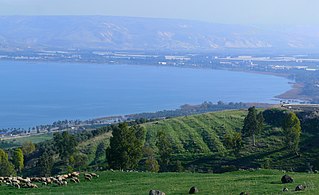
The Sea of Galilee, Lake Tiberias, Kinneret or Kinnereth, is a freshwater lake in Israel. It is the lowest freshwater lake on Earth and the second-lowest lake in the world, at levels between 215 metres (705 ft) and 209 metres (686 ft) below sea level. It is approximately 53 km (33 mi) in circumference, about 21 km (13 mi) long, and 13 km (8.1 mi) wide. Its area is 166.7 km2 (64.4 sq mi) at its fullest, and its maximum depth is approximately 43 m (141 feet). The lake is fed partly by underground springs but its main source is the Jordan River, which flows through it from north to south and exits the Sea at the Degania Dam.

The Negev is a desert and semidesert region of southern Israel. The region's largest city and administrative capital is Beersheba, in the north. At its southern end is the Gulf of Aqaba and the resort city of Eilat. It contains several development towns, including Dimona, Arad and Mitzpe Ramon, as well as a number of small Bedouin towns, including Rahat and Tel as-Sabi and Lakyah. There are also several kibbutzim, including Revivim and Sde Boker; the latter became the home of Israel's first Prime Minister, David Ben-Gurion, after his retirement from politics.
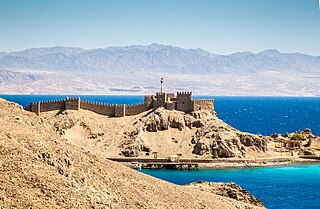
Taba is an Egyptian town near the northern tip of the Gulf of Aqaba. Taba is the location of Egypt's busiest border crossing with neighbouring Eilat, Israel. Taba is a frequent vacation spot for Egyptians and tourists, especially those from Israel on their way to other destinations in Egypt or as a weekend getaway. It is the northernmost resort of Egypt's Red Sea Riviera.

The sand cat, also known as the sand dune cat, is a small wild cat living in sandy and stony deserts far from water sources. With its sandy to light grey fur, it is well camouflaged in a desert environment. Its head-and-body length ranges from 39–52 cm (15–20 in) with a 23–31 cm (9.1–12.2 in) long tail. Its 5–7 cm (2.0–2.8 in) long ears are set low on the sides of the head, aiding detection of prey moving underground. The long hair covering the soles of its feet insulates its foot pads against the extremely hot and cold temperatures in deserts.

Ein Gedi, literally "spring of the kid " is an oasis and a nature reserve in Israel, located west of the Dead Sea, near Masada and the Qumran Caves. Ein Gedi was listed in 2016 as one of the most popular nature sites in the country. The site attracts about one million visitors a year.

Za'atar is a culinary herb or family of herbs. It is also the name of a spice mixture that includes the herb along with toasted sesame seeds, dried sumac, often salt, as well as other spices. As a family of related Middle Eastern herbs, it contains plants from the genera Origanum (oregano), Calamintha, Thymus, and Satureja (savory) plants. The name za'atar alone most properly applies to Origanum syriacum, considered in biblical scholarship to be the hyssop of the Hebrew Bible. Used in Levantine cuisine, both the herb and spice mixture are popular throughout the Mediterranean region of the Middle East.

The mountain gazelle or the Palestine mountain gazelle is a species of gazelle widely but unevenly distributed.

Blanford's fox is a small fox native to the Middle East and Central Asia. It is listed as Least Concern on the IUCN Red List.

The Nubian ibex is a desert-dwelling goat species found in mountainous areas of northern and northeast Africa, and the Middle East. Its range is within Algeria, Egypt, Ethiopia, Eritrea, Israel, Jordan, Oman, Saudi Arabia, Sudan, and Yemen. It is extirpated in Lebanon. It is historically considered to be a subspecies of the Alpine ibex, but is increasingly considered a specifically distinct species. The wild population is estimated at 1,200 individuals.

The marbled polecat is a small mammal belonging to the monotypic genus Vormela within the mustelid subfamily Ictonychinae. Vormela is from the German word Würmlein, which means "little worm". The specific name peregusna comes from perehuznya (перегузня), which is Ukrainian for "polecat". Marbled polecats are generally found in the drier areas and grasslands of southeastern Europe to western China. Like other members of Ictonychinae, it can emit a strong-smelling secretion from anal sacs under the tail when threatened.
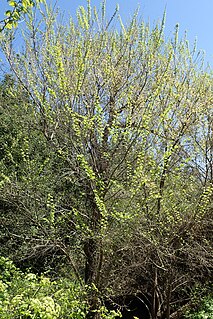
Ulmus minorsubsp.canescens is a small deciduous tree occasionally known by the common names grey elm, grey-leafed elm, and hoary elm. Its natural range extends through the lands of the central and eastern Mediterranean, from southern Italy, the islands of Sicily, Malta, Crete, Rhodes and Cyprus, to Turkey, and as far south as Israel, where it is now considered rare and endangered in the wild. The tree is typically found amidst the comparatively humid coastal woodlands and scrublands.

Israel, officially known as the State of Israel, is a country in Western Asia, located on the southeastern shore of the Mediterranean Sea and the northern shore of the Red Sea. It has land borders with Lebanon to the north, Syria to the northeast, Jordan on the east, the Palestinian territories of the West Bank and the Gaza Strip to the east and west, respectively, and Egypt to the southwest. Israel's economic and technological center is Tel Aviv, while its seat of government and proclaimed capital is Jerusalem, although international recognition of the state's sovereignty over Jerusalem is limited.
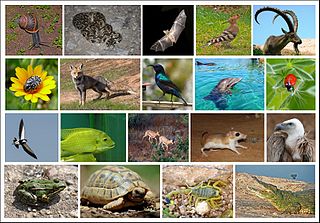
The wildlife of Israel includes the flora and fauna of Israel, which is extremely diverse due to the country's location between the temperate and the tropical zones, bordering the Mediterranean Sea in the west and the desert in the east. Species such as the Syrian brown bear and the Arabian ostrich have become extinct in Israel because of their loss of habitat. As of May 2007, 190 nature reserves have been established in Israel.

Günther's vole is a species of rodent in the family Cricetidae, also known by the name Levant vole. It is found in Bulgaria, Greece, Iran, Iraq, Israel, Jordan, Lebanon, North Macedonia, Serbia and Montenegro, Syria, Turkey, and Libya. In Libya, its natural habitats are temperate grassland, subtropical or tropical high-altitude grassland, and arable land. In Israel, it is common in lowland agricultural fields, in peak years becoming a major crop pest.
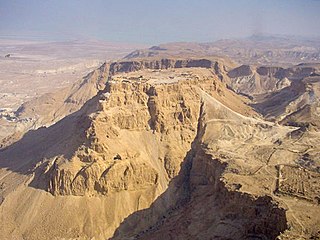
National parks of Israel are declared historic sites or nature reserves, which are mostly operated and maintained by the National Nature and Parks Authority. As of 2015, Israel maintains 81 national parks and more than 400 nature reserves that protect 2,500 species of indigenous wild plants, 32 species of fish, 530 species of birds and 100 species of mammals.

The Persian fallow deer is a rare deer native to the Middle East, today occurring only in Iran and Israel by being reintroduced into the wild. It has been listed as endangered on the IUCN Red List since 2008. After a captive breeding program, the population has rebounded from only a handful of deer in the 1960s to over a thousand individuals today.

Katinka's shrew is a species of mammal in the family Soricidae. It has been recorded from Israel, Syria, and Palestine, but it may now be extinct in Israel. It may also be present in southwestern Iran.

Manot Cave is a cave in Western Galilee, Israel, discovered in 2008. It is notable for the discovery of a skull that belongs to a modern human, called Manot 1, which is estimated to be 54,700 years old. The partial skull was discovered at the beginning of the cave's exploration in 2008. Its significance was realised after detailed scientific analysis, and was first published in an online edition of Nature on 28 January 2015. This age implies that the specimen is the oldest known human outside Africa, and is evidence that modern humans lived side-by-side with Neanderthals. The cave is also noted for its "impressive archaeological record of flint and bone artefacts". Geologically, it is an "active stalactite cave".



















